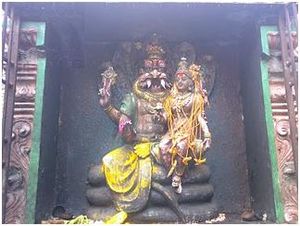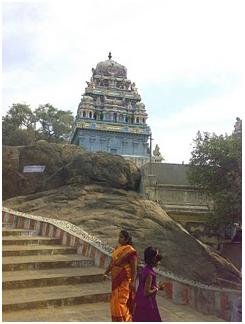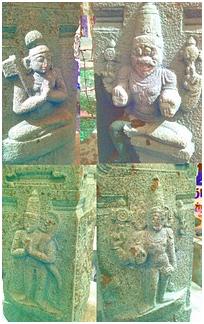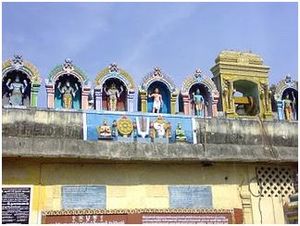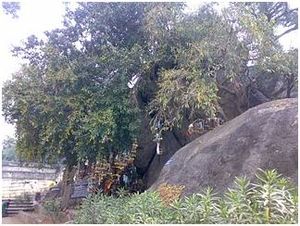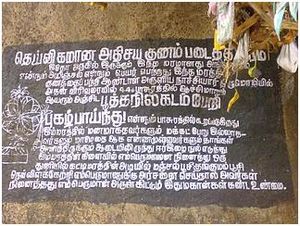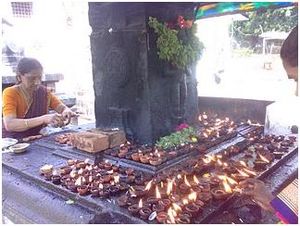Singaperumal Koil Sri Ugra Narasimhar
Singaperumal Koil is about 25 kms from Tambaram and the temple is just 100 meters off the GST Road. The village itself is named after the deity of this temple. The main deity here is Lord Narasimhar. This is a beautiful rock cut temple. The temple and even the deity is carved out of a small hillock. Here the Lord is known as Sri Paatalaadri Narasimhar. In Sanskrit Paatalaadri means a reddish hill. The original name of this place itself is Paatalaadripuram.
According to temple sources, this temple has been referred in Brahmaanda Puraanam. Lord Vishnu took the form (Avataar) of Sri Narasimha and killed the demon king Hiranyakasipu. At the time of Narasimha Avataar, this place was surrounded by dense forests. A sage called ‘Jaapaali’ was performing Thapas, praying Lord Vishnu. As wished by him, the Lord gave dharshan to him in the form of Ugra (fierce) Narasimhar.
The main sanctum itself is a rock cut shrine on which the deity too is carved out of the hill itself. So, whoever wants to circumambulate around the temple has to actually go around the small hillock as Giri Pradhakshinam. Hence, Giri Pradhakshinam is very popular here. There are Bali Peetams seen at certain directions, while going around the temple. The main deity is seen here as Ugra (fierce) murthy, holding Paanchajanya (conch) and Sudharsana Chakra, showing Abhaya Hastha in one of His hands. Sri Narasimha Swamy here has 3 eyes and the third eye is shown by the priest while performing Haarathi.
The Goddess here is Sri Ahobila Valli Thaayaar. There is a separate shrine for Lord Vishnu too. The Urchavar here is called Sri Prahalaadha Varadhar. While walking around the temple, there is an Azhinjal tree in this temple, which is considered most sacred. It is said that this tree has mentions in the ‘Naachiyaar Thirumozhi’ composed by Sri Aandaal. People praying for marriage or children tie a small piece of thread from their clothes on the branches of this tree. By doing this with a wish, it is believed that their wishes are granted.
Sri Anjaneyar (Hanuman) is seen on the pillar adjacent to Dwajasthambha, where many people light Ghee lamps for the God. While entering into the street of this temple, there are 4 pillars welcoming us, which look too ancient having beautiful sculptures. The Theertham for this temple is called Suddha Pushkarani and Sthala Viruksham is Paarijaatham.

